Table of contents:
The Role of the Project Manager
Step by Step Project Management Plan
Did you know that a lot of projects die at the planning stage? It’s true, and poor project planning is one of the top reasons for failure overall.
Without a well-considered plan, by the time you reach the middle of the project, it may seem the team is directionless, deadlines are being missed, and you’re blowing the budget. That’s why it’s vital to create a project management plan before diving into the development process.
The Role of the Project Manager
Step by Step Project Management Plan
Keep reading and you’ll learn:
As a bonus, you’ll get some examples of project management plan templates.

To build a high-quality software product, the development team needs a detailed plan with a description of the project’s goals, approaches, and tasks. Also, the team needs a designated person to control project performance, organize the work process, and communicate with stakeholders on behalf of the development team. These challenges can be successfully completed by a project manager or PM.
In simple terms, the role of project managers is to set goals and make a plan to achieve them. But their responsibilities go beyond that. Such specialists not only participate in launching products but also monitor and update the company’s internal processes.
The thing is, sometimes clients underestimate the importance of a project manager in a team. They may even try to take on this role themselves: after all, how hard can it be to set tasks and monitor deadlines? Though it sounds simple, it is definitely not.
Need a Project Manager to handle software development processes?
HQSoftware has a team of skilled professionals ready to tackle the project. Let’s talk!
Anna Halias
Business Development Manager,
HQSoftware
Eventually, product owners understand the importance of hiring a project manager, especially in the software product development industry, where a deep understanding of all specifics is a must. In addition, without a PM the work is bound to be inefficient because no one is overseeing the full process. This results in a fragmented team and delays, which will affect customer satisfaction.
A project manager is especially necessary when it comes to working with remote teams. In this case, team members may face the problem of not receiving pertinent information in a timely way and may have trouble building communication. A manager helps ensure clear communication, provides the team with updates quickly, and effectively monitors the development progress.
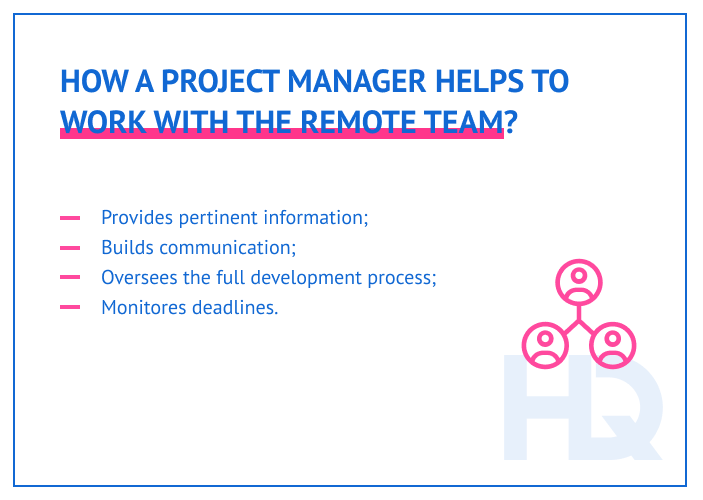
Are there other benefits of having a PM in the team? Of course! A project manager:
Statistics show that software companies with project managers on board see better results: 77% of companies achieve their goals if there is a project manager hired, compared to the 56% of companies who work without a PM. The same is true for budget management — 67% versus 46% — and time management, where 63% of companies deliver on time with a PM involved, compared with 39% of businesses with no PM.
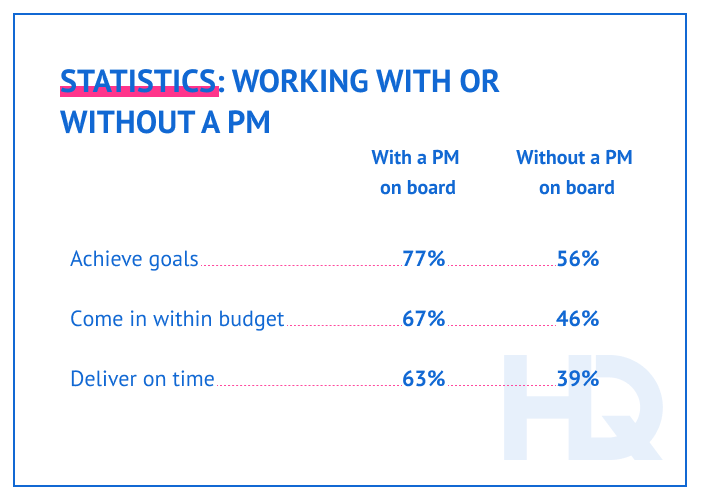
A PM manages the project from start to finish and works on both the team and stakeholders’ sides.
One of the most important aspects of the manager’s work is communicating with stakeholders, understanding their requirements, and keeping in the loop on the project‘s progress.
To organize work effectively, a project manager uses various project management methodologies, from the familiar Agile and Kanban systems to more complicated RAD and others. The choice of methodologies depends on the type and specifics of a project.
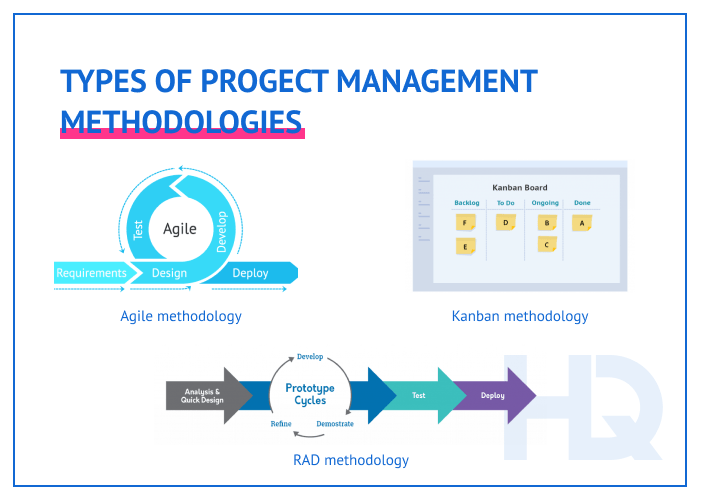
To sum up, the functions of a PM include the following:
To complete all these tasks, a PM has to create a project management plan, which should cover all steps of the software development process and set goals based on them.
So, let’s examine what this plan is about and how to create a good one.
A project management plan is a formal document that contains all details about the performance of the project. It includes goals, budget, timeline, roles, and outcomes.
Following the plan ensures completion of all tasks, helps to keep the process within deadlines, and even relieves pressure related to management tasks. Also, the plan gives the stakeholders an understanding of what is going on in the project and when each stage will be completed.
A well-written plan that will have a positive effect on the development process includes the following parts:
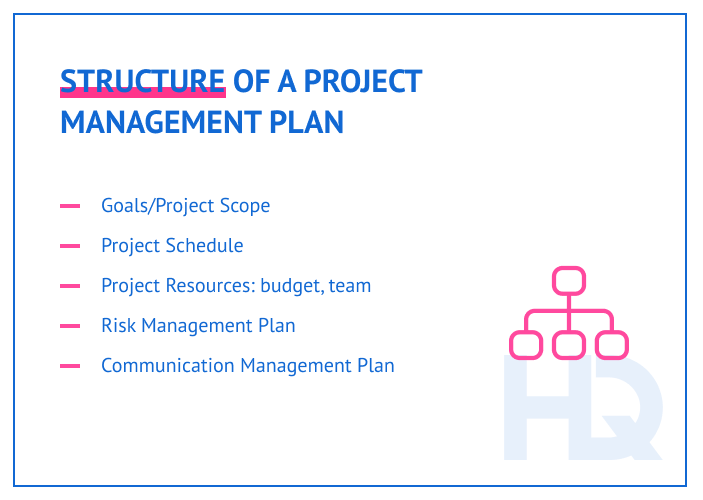
Let’s take a closer look at each step of writing a project plan for software development.
In this phase, it is necessary to define what steps the team should take to accomplish the project objectives. First of all, a project manager gathers as much information about the project as possible.
After that, they analyze all information and organize it into categories related to various facets of development, such as timelines, requirements, team, and so on. Then they consider how one part affects another, find the most crucial impacts, and place them in order.
This structure helps the managers and the board understand how the team will achieve the goals of the development process.
Also, it makes sense to prioritize tasks. Deciding on a hierarchy allows the team to focus on the most essential parts of the work and helps avoid using resources for tasks that aren’t key to the project’s success.
The bottom line is, the effort managers make at this step affects how successful a project will be eventually. So, it’s vital to approach the goal-setting process properly.
The project schedule is a document that includes information related to time management. According to the research, 71.4% of software development projects were delivered on time in 2020. Success at on-time delivery definitely depends on keeping to a schedule.
To create one, a PM breaks team tasks into individual achievable activities, prioritizes them, and estimates their duration. Then, a specialist visualizes all tasks and puts them into a structured plan with the help of diagrams, for example a Gantt chart.
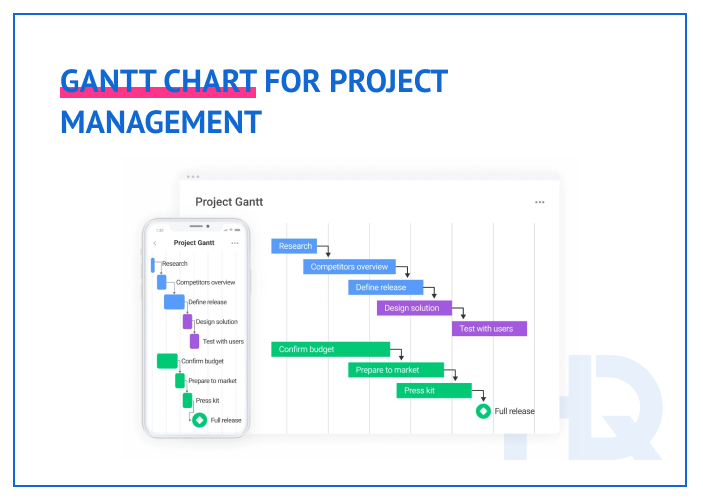
This tool allows for visually plotting each task, establishing timelines, creating dependencies, and assigning responsibilities.
This helps a project manager understand which resources are needed for a particular task and manage them effectively. It also makes processes more clear to the team, as they can check out the chart at any moment to make sure they’re on track.
As part of this stage, a project manager establishes a team and immerses it in the details and the main vision of the project.
As a matter of convenience for both the team and stakeholders, the PM can create a team hierarchy, showing the contact information on team members and their duties. One more benefit of this structure is that all members know exactly what they are responsible for and can easily collaborate with other staff.
One more important objective of this step is to assess and determine the project budget.
For this purpose, a PM needs a list of all required resources, including equipment and people. After that, the specialist estimates expenses for each task and defines the total cost of the project. Some 43% of organizations that use a plan say they come in within budget mostly or always.
This stage entails evaluating all factors that can impede the work. It considers scope, development and product launch risks, and potential unforeseen events.
It’s important to have a plan that will help the team cope with emerging risks, thus minimizing the negative impact on the project. For this purpose, companies may use a risk matrix.
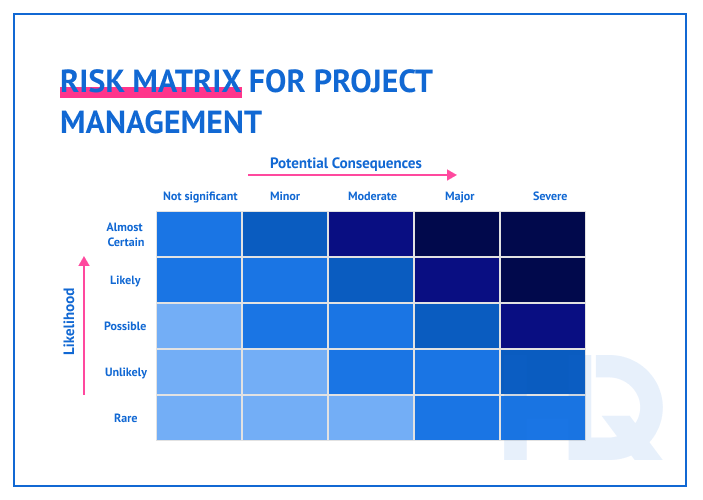
The matrix helps to organize potential risks in a single table, so as to assess the likelihood and severity of each one. Once a better understanding of the risk summary is gained, it becomes easier to analyze each risk more seriously and prevent it in the initial phase.
According to PMI’s Guide to the Project Management Body of Knowledge, more than 70% of a PM’s work involves communication, with both stakeholders and the team.
Simply making a plan isn’t always enough. It’s a significant thing to convey the main features and ideas of the plan to both parties. Also, it’s important to maintain communication with customers during all software development processes, to provide them with important updates on the project.
When developing the communication management plan, a project manager should determine:
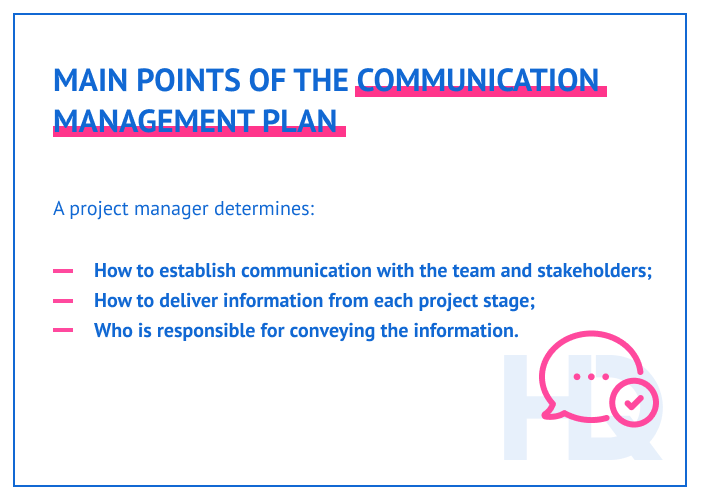
It’s also important to analyze how communication is going over time and quickly update the plan to cover emerging needs. This way, a PM can be sure all procedures are going well and nothing interrupts the smooth running of the project.
We have discussed which blocks a PM’s plan should include. But how should all this be formalized properly?
For the majority of managers, it’s easiest to use templates to follow the structure of a plan and keep up with important issues. There are a lot of templates available on the Internet, which we’ll look at below.
Below are some great templates that will help you create a software project management plan.
For example, Hubspot provides clear and simple templates here.
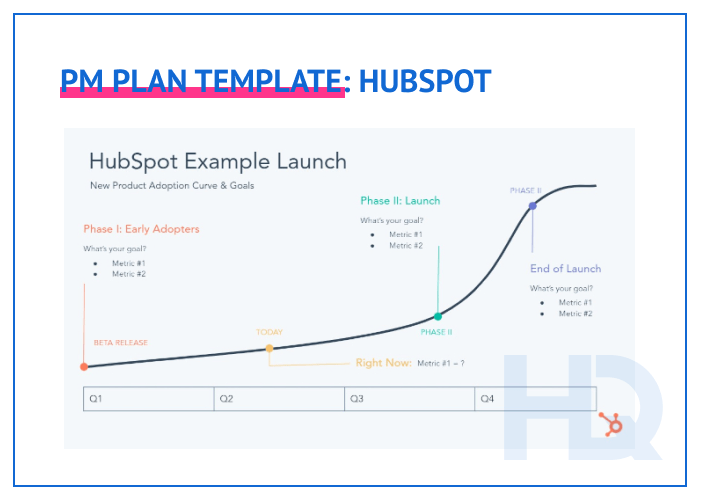
Also, the University of Chicago offers a wide list of templates and documents for each step of project planning.
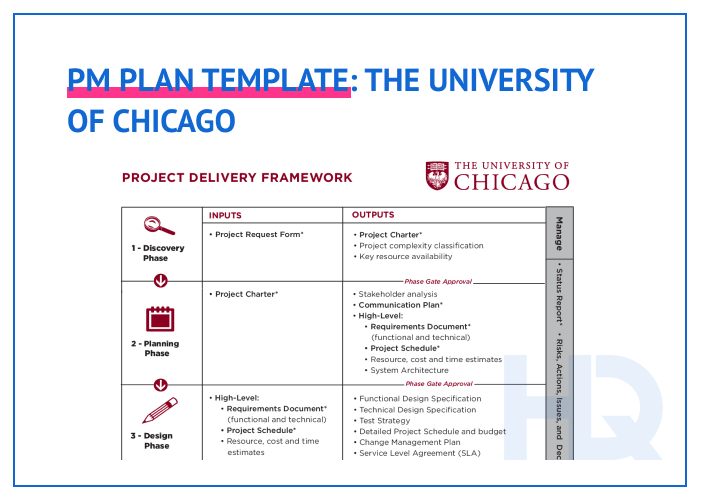
Every good template is built according to best practices that we will discuss below.
Best practices are common standards that help to build efficient project management plans.
All in all, a precise software project management plan should cover aspects such as:
Templates and tools are helpful in simplifying the creation of a project management plan. Specific software can also boost the productivity of development and management procedures.
And always keep in mind that a PM plan should be:

Remember, good project management requires investing time and effort. So, the process of project planning shouldn’t be rushed. Taking shortcuts not only prevents a PM from covering all aspects of the software development process, but may result in mistakes.
On the other hand, a responsible approach to developing the details of a PM plan helps the project proceed smoothly and successfully.
At HQSoftware, we assemble dedicated teams – a thoroughly picked team of specialists with preferred levels of expertise. The team will gather your project requirements, analyze them, and get ready to develop a software product for your business.
The team includes a PM who will manage the development process, control budget and deadlines, and use best practices and methodologies of project management, e.g. Agile, Scrum, or any other.

Head of Production
To ensure the outstanding quality of HQSoftware’s solutions and services, I took the position of Head of Production and manager of the Quality Assurance department. Turn to me with any questions regarding our tech expertise.
We are open to seeing your business needs and determining the best solution. Complete this form, and receive a free personalized proposal from your dedicated manager.

Sergei Vardomatski
Founder